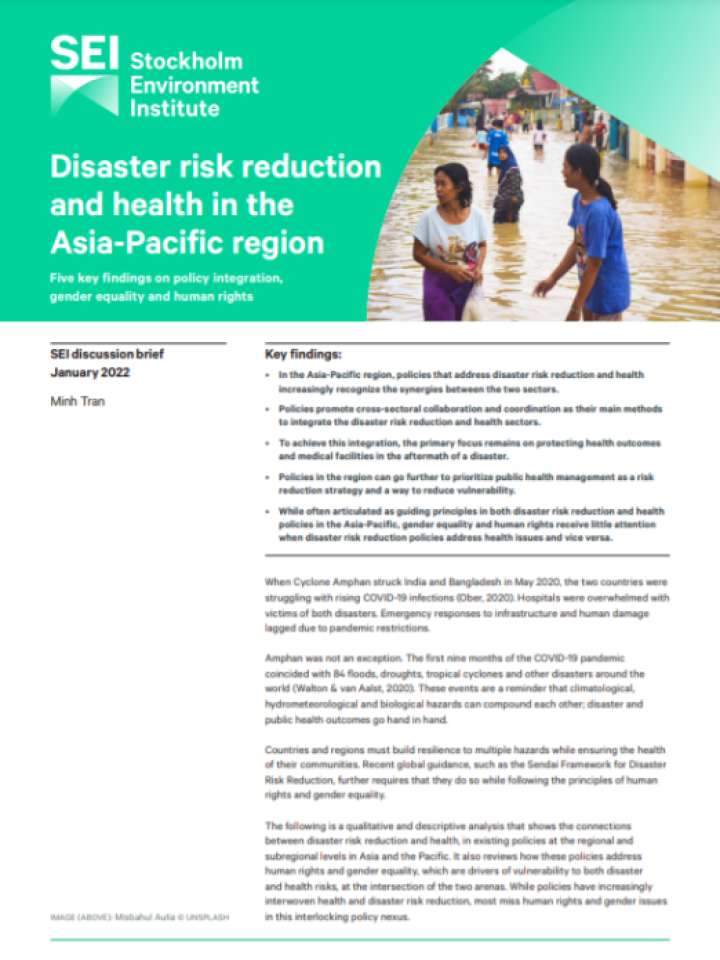Disaster risk reduction and health in the Asia-Pacific region
This brief provides a qualitative and descriptive analysis that shows the connections between disaster risk reduction and health, in existing policies at the regional and sub-regional levels in Asia and the Pacific. It also reviews how these policies address human rights and gender equality, which are drivers of vulnerability to both disaster and health risks, at the intersection of the two arenas. While policies have increasingly interwoven health and disaster risk reduction, most miss human rights and gender issues in this interlocking policy nexus.
This brief indicates that in the Asia-Pacific region, policies that address disaster risk reduction and health increasingly recognize the synergies between the two sectors. Policies in the region promote cross-sectoral collaboration and coordination as their main methods to integrate the disaster risk reduction and health sectors. To achieve this integration, the primary focus remains on protecting health outcomes and medical facilities in the aftermath of a disaster. Policies in the region, however, can go further to prioritize public health management as a risk reduction strategy and a way to reduce vulnerability. While often articulated as guiding principles in both disaster risk reduction and health policies in the Asia-Pacific, gender equality and human rights receive little attention when disaster risk reduction policies address health issues and vice versa.
Explore further
